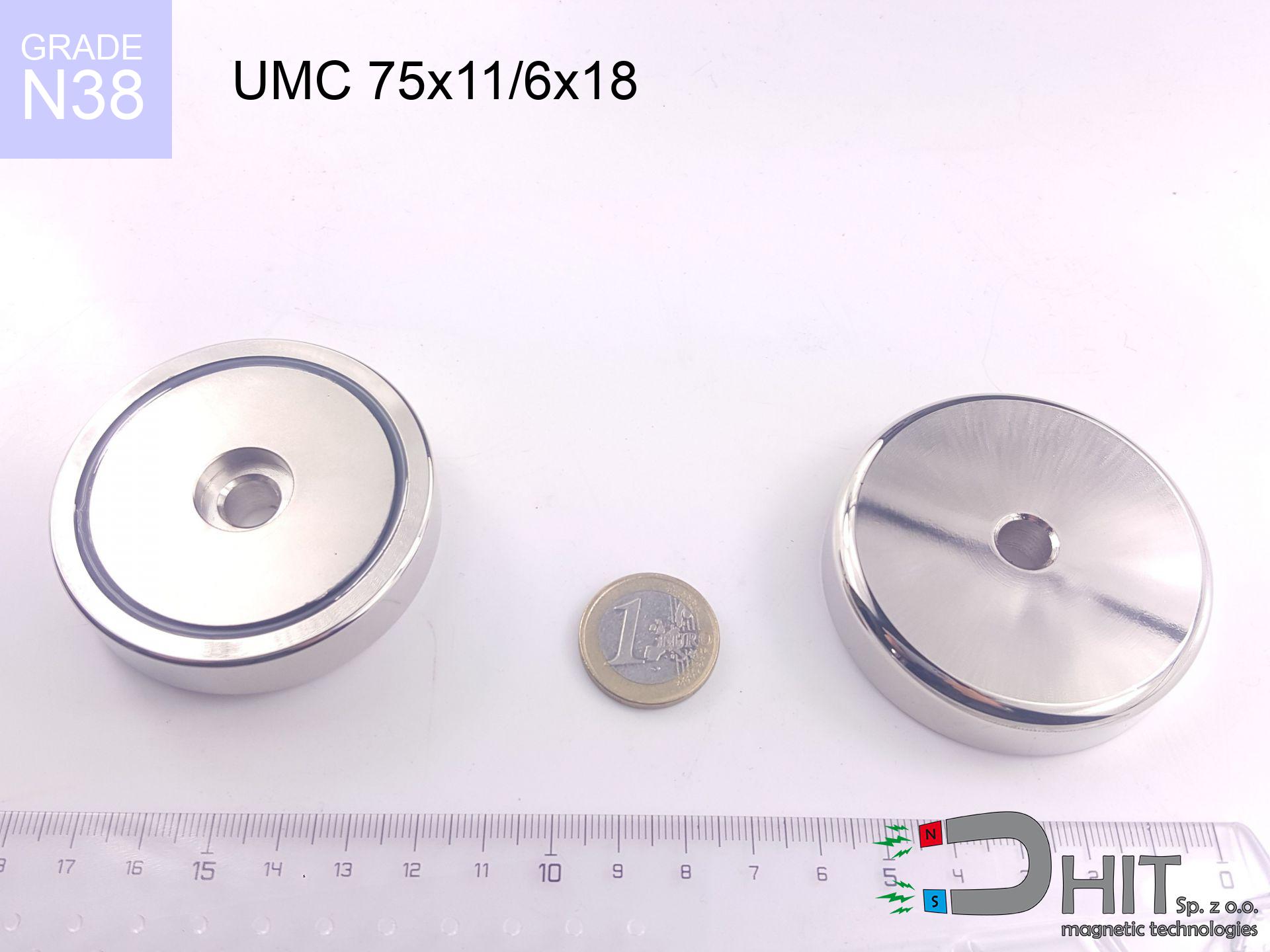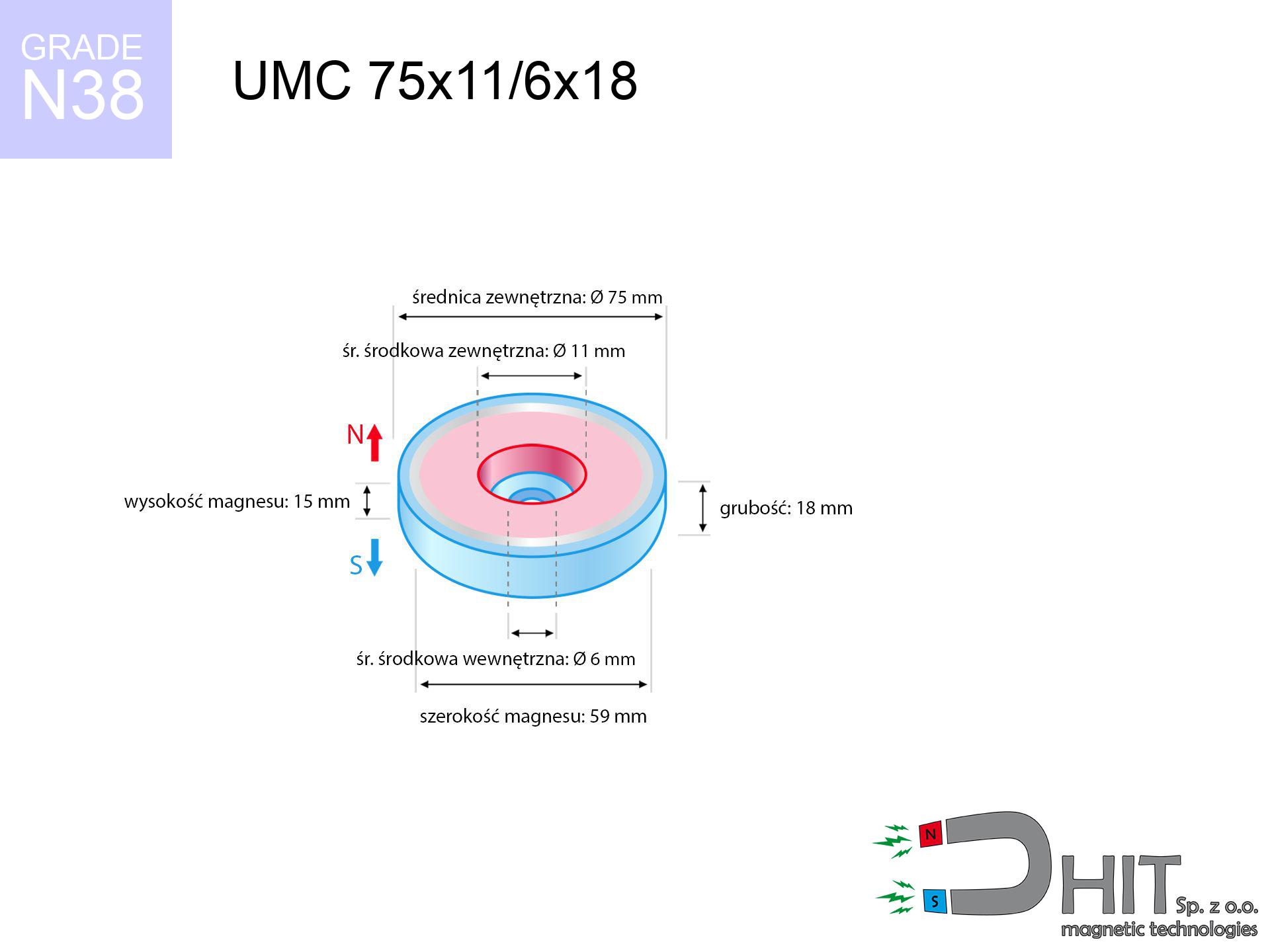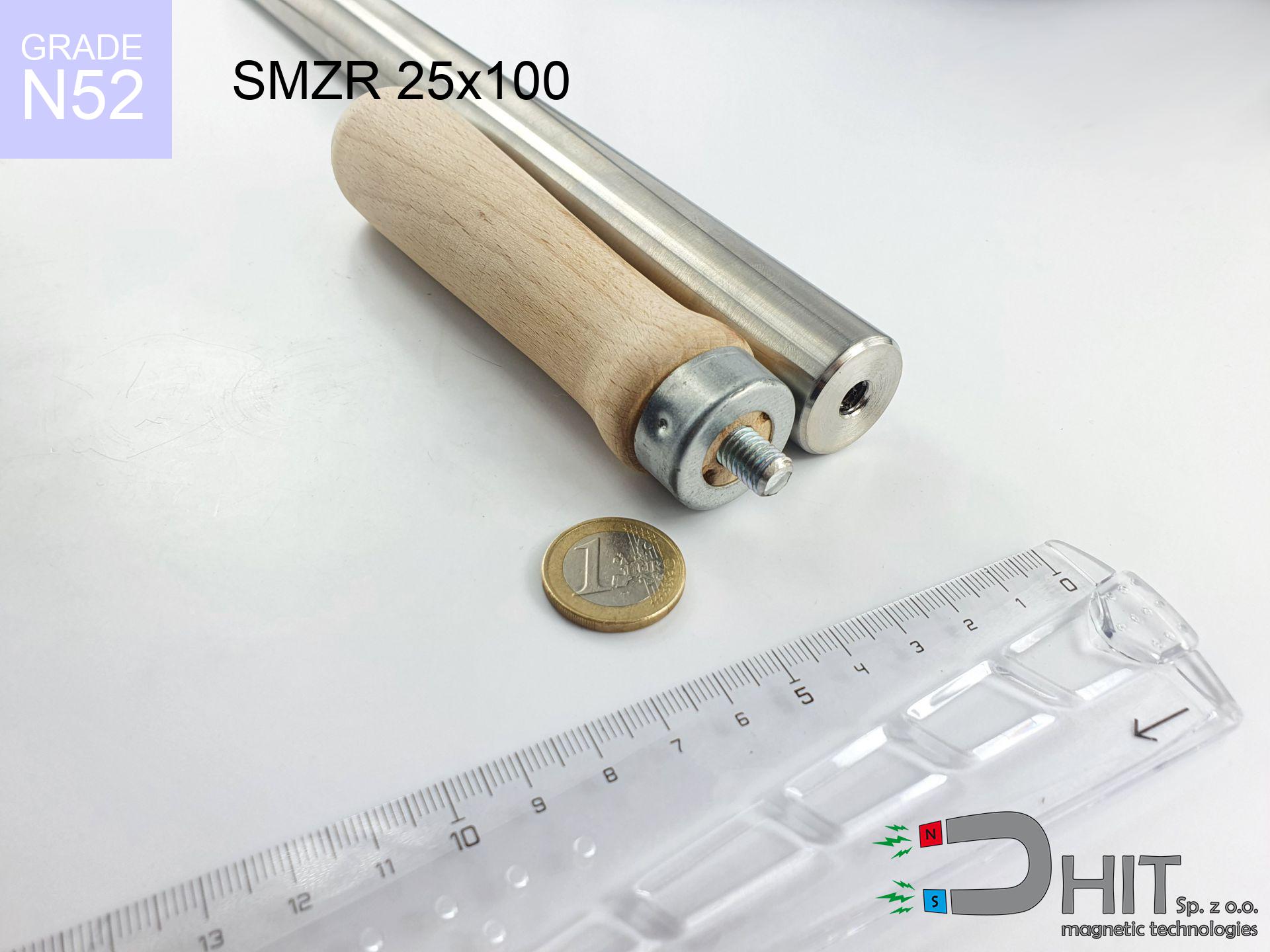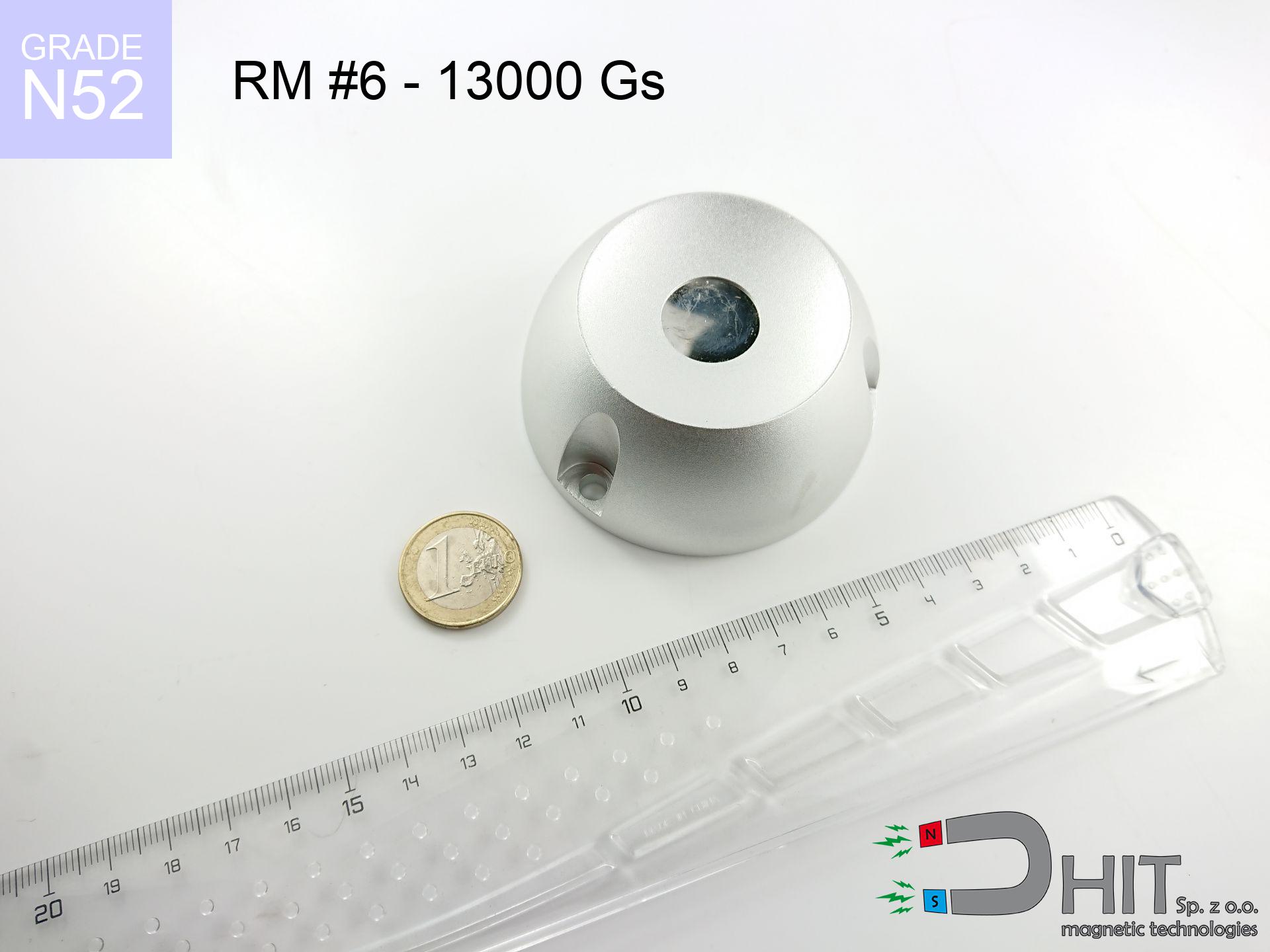UMC 75x11/6x18 / N38
cylindrical magnetic holder
catalog number 320414
GTIN: 5906301814702
external diameter Ø
75
mm [±0,1 mm]
internal diameter Ø
11/6
mm [±0,1 mm]
height
18
mm [±0,1 mm]
capacity ~
155.00 kg / 1520.03 N
max. temperature
≤ 80
°C
catalog number 320414
GTIN: 5906301814702
external diameter Ø
75 mm [±0,1 mm]
internal diameter Ø
11/6 mm [±0,1 mm]
height
18 mm [±0,1 mm]
capacity ~
155.00 kg / 1520.03 N
max. temperature
≤ 80 °C
169.86 ZŁ gross price (including VAT) / pcs +
138.10 ZŁ net price + 23% VAT / pcs
bulk discounts:
need more quantity?Don't know what to buy?
Give us a call tel: +48 888 99 98 98 or write through contact form on the contact page. You can check the lifting capacity as well as the shape of neodymium magnets in our magnetic mass calculator force calculator
Orders placed by 2:00 PM will be shipped on the same business day.
Specification: cylindrical magnetic holder 75x11/6x18 / N38
Magnetic properties of the material N38
Physical properties of sintered neodymium magnets Nd2Fe14B
Notice: Undefined index: in /home/currara/domains/dhit.pl/public_html/app/scripts/product-details.php on line 829
Recommended articles for purchase
Advantages as well as disadvantages of neodymium magnets NdFeB.
In addition to immense strength, neodymium magnets have the following advantages:
- They do not lose power over time. After about 10 years, their strength decreases by only ~1% (theoretically),
- They protect against demagnetization caused by external magnetic field extremely well,
- In other words, thanks to the shiny coating of nickel, gold, or silver, the element acquires an aesthetic appearance,
- They have very high magnetic induction on the surface of the magnet,
- Magnetic neodymium magnets are characterized by very high magnetic induction on the surface of the magnet and can operate (depending on the shape) even at temperatures of 230°C or higher...
- Due to the option of accurate forming and adaptation to individual needs – neodymium magnets can be produced in various forms and dimensions, which enhances their versatility in applications.
- Wide application in modern technologies – are utilized in computer drives, electric drive mechanisms, medical apparatus and very modern machines.
Disadvantages of neodymium magnets:
- They are prone to breaking as they are fragile when subjected to a powerful impact. If the magnets are exposed to impacts, we recommend using magnets in a protective case. The steel housing in the form of a holder protects the magnet from impacts and also increases its overall strength,
- High temperatures can reduce the power of neodymium magnets. Typically, after heating above 80°C, most of them experience a permanent reduction in strength (although it is dependent on the form and size). To prevent this, we offer special magnets marked with the symbol [AH], which are highly resistant to high temperatures. They can operate even at temperatures up to 230°C, making them an ideal solution for applications requiring high-temperature operation,
- They rust in a humid environment - during outdoor use, we recommend using waterproof magnets, such as those made of rubber or plastic,
- The use of a cover - a magnetic holder is recommended due to the limited production capabilities of creating threads or complex shapes in the magnet
- Possible danger to health from tiny fragments of magnets pose a threat, in case of ingestion, which is crucial in the context of children's health. Additionally, small elements of these magnets can complicate diagnosis after entering the body.
Exercise Caution with Neodymium Magnets
Neodymium magnetic are characterized by their fragility, which can cause them to crumble.
Magnets made of neodymium are fragile as well as will break if allowed to collide with each other, even from a distance of a few centimeters. They are coated with a shiny nickel plating similar to steel, but they are not as hard. At the moment of connection between the magnets, small sharp metal pieces can be propelled in various directions at high speed. Eye protection is recommended.
Do not place neodymium magnets near a computer HDD, TV, and wallet.
The strong magnetic field generated by neodymium magnets can damage magnetic media such as floppy disks, video tapes, HDDs, credit cards, magnetic ID cards, cassette tapes, or other devices. They can also destroy videos, televisions, CRT computer monitors. Do not forget to keep neodymium magnets away from these electronic devices.
Magnets are not toys, children should not play with them.
Remember that neodymium magnets are not toys. Do not allow children to play with them. Small magnets can pose a serious choking hazard. If multiple magnets are swallowed, they can attract to each other through the intestinal walls, causing severe injuries, and even death.
Neodymium magnets can demagnetize at high temperatures.
Even though magnets have been observed to maintain their efficacy up to temperatures of 80°C or 175°F, it's essential to consider that this threshold may fluctuate depending on the magnet's type, configuration, and intended usage.
People with pacemakers are advised to avoid neodymium magnets.
Neodymium magnets generate strong magnetic fields. As a result, they interfere with the operation of a pacemaker. This happens because such devices have a function to deactivate them in a magnetic field.
It is crucial not to allow the magnets to pinch together uncontrollably or place your fingers in their path as they attract to each other.
Magnets will jump and touch together within a radius of several to almost 10 cm from each other.
Keep neodymium magnets as far away as possible from GPS and smartphones.
Intense magnetic fields generated by neodymium magnets interfere with compasses and magnetometers used in navigation, as well as internal compasses of smartphones and GPS devices.
The magnet coating contains nickel, so be cautious if you have a nickel allergy.
Studies show a small percentage of people have allergies to certain metals, including nickel. An allergic reaction often manifests as skin redness and rash. If you have a nickel allergy, try wearing gloves or avoid direct contact with nickel-plated neodymium magnets.
Dust and powder from neodymium magnets are highly flammable.
Do not attempt to drill into neodymium magnets. Mechanical processing is also not recommended. Once crushed into fine powder or dust, this material becomes highly flammable.
Neodymium magnets are the most powerful magnets ever invented. Their power can shock you.
Familiarize yourself with our information to properly handle these magnets and avoid significant injuries to your body and prevent disruption to the magnets.
So you are aware of why neodymium magnets are so dangerous, see the article titled How very dangerous are powerful neodymium magnets?.




![magnetic holder internal thread 16x13x5 [M4] GW / N38 magnetic holder internal thread 16x13x5 [M4] GW / N38](https://cdn3.dhit.pl/graphics/products/um-16x13x5-m4-gw-fig.jpg)



